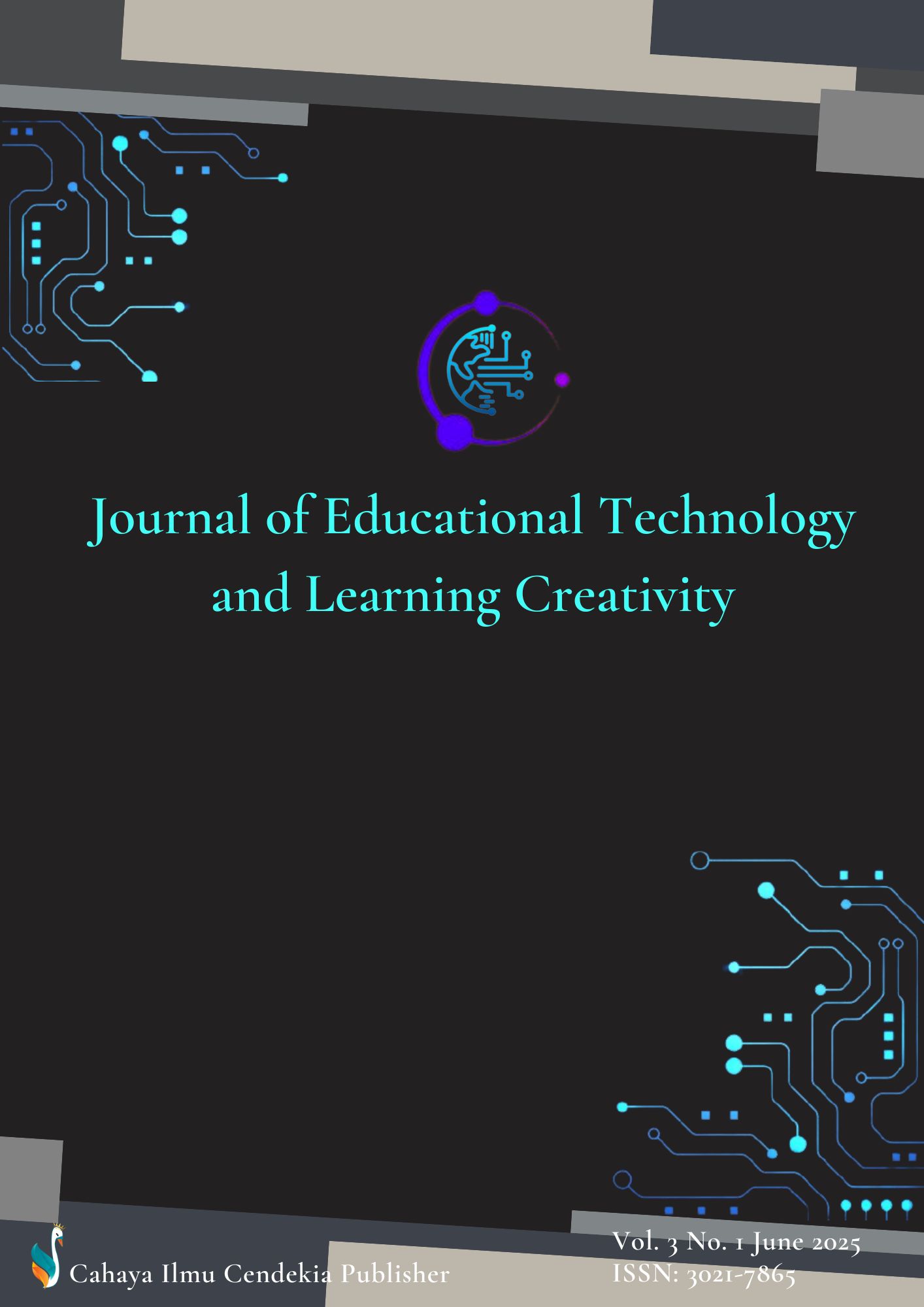The Impact of Health Technology Use on Digital Literacy Among Communities: An Empirical Study in Tanzania
Abstract
Purpose of the study: This This study investigates the relationship between health technology use and digital literacy skills in the general community, particularly in the context of Tanzania, where the adoption of digital health tools is gaining momentum. The rapid integration of information technology (IT) in health services—such as telemedicine, e-health records, and mobile health applications—has made digital literacy an essential skill for individuals to access and utilize these technologies effectively.
Methodology: Through a mixed-methods approach, this study gathered data from 220 respondents from Tanzania, exploring their digital literacy levels and attitudes toward health technology.
Main Findings: The results revealed that 58.6% of respondents had a positive view of health technology, with 62.3% demonstrating strong digital literacy skills. A regression analysis identified a significant positive relationship between health technology use and digital literacy, explaining 65.1% of the variance in digital literacy skills (R² = 0.651). Qualitative interviews provided deeper insights, highlighting barriers faced by older adults and individuals with lower educational backgrounds, particularly in accessing and utilizing digital health services.
Novelty/Originality of this study: This study contributes to the growing body of knowledge on the intersection of health technology adoption and digital literacy by emphasizing the socio-demographic disparities in access. It calls for targeted digital literacy training as an integral part of public health programs, ensuring that all demographic groups, particularly vulnerable populations, can fully benefit from digital health innovations. The study also proposes policy interventions to bridge the digital divide and improve equity in healthcare access
References
S. Mishra and A. K. Tyagi, “The role of machine learning techniques in internet of things-based cloud applications,” Internet of Things, no. January, pp. 105–135, 2022, doi: 10.1007/978-3-030-87059-1_4.
S. Aminizadeh et al., “The applications of machine learning techniques in medical data processing based on distributed computing and the Internet of Things,” Comput. Methods Programs Biomed., vol. 241, p. 107745, 2023, doi: https://doi.org/10.1016/j.cmpb.2023.107745.
M. Kumar et al., “Healthcare Internet of Things (H-IoT): current trends, future prospects, applications, challenges, and security issues,” Electron., vol. 12, no. 9, 2023, doi: 10.3390/electronics12092050.
S. B. Junaid et al., “Recent advancements in emerging technologies for healthcare management systems: a survey,” Healthc., vol. 10, no. 10, 2022, doi: 10.3390/healthcare10101940.
D. Bhati, M. S. Deogade, and D. Kanyal, “Improving patient outcomes through effective hospital administration: a comprehensive review,” Cureus, vol. 15, no. 10, 2023, doi: 10.7759/cureus.47731.
H. M. Pontes et al., “Measurement and conceptualization of gaming disorder according to the world health organization framework: the development of the gaming disorder test,” Int. J. Ment. Health Addict., vol. 19, no. 2, pp. 508–528, 2021, doi: 10.1007/s11469-019-00088-z.
N. Assarzadegan and E. Montgomery, “What is new in the 2019 world health organization (WHO) classification of tumors of the digestive system: review of selected updates on neuroendocrine neoplasms, appendiceal tumors, and molecular testing,” Arch. Pathol. Lab. Med., vol. 145, no. 6, pp. 664–677, 2021, doi: 10.5858/arpa.2019-0665-RA.
J. D. Khoury et al., “The 5th edition of the world health organization classification of haematolymphoid tumours: myeloid and histiocytic/dendritic neoplasms,” Leukemia, vol. 36, no. 7, pp. 1703–1719, 2022, doi: 10.1038/s41375-022-01613-1.
Y. Li, N. Wang, and A. R. A. Latiff, “Development of the bamboo forest economy: reviewing China’s ‘bamboo as a substitute for plastic initiative’ and its development,” Adv. Bamboo Sci., vol. 11, no. October 2024, p. 100130, 2025, doi: 10.1016/j.bamboo.2025.100130.
N. Sun et al., “Research trends and key contributors in studies on influenza vaccines for children: A 20-year bibliometric analysis,” Hum. Vaccines Immunother., vol. 21, no. 1, 2025, doi: 10.1080/21645515.2024.2443281.
A. Ghasemi, P. Mirmiran, K. Kashfi, and Z. Bahadoran, “Scientific publishing in biomedicine: a brief history of scientific journals,” Int. J. Endocrinol. Metab., vol. 21, no. 1, pp. 1–10, 2023, doi: 10.5812/ijem-131812.
K. Eumbunnapong, P. Wannapiroon, and P. Pornpongtechavanich, “An intelligent digital learning platform to enhance digital health literacy,” Int. J. Emerg. Technol. Learn., vol. 17, no. 4, pp. 95–111, 2022, doi: 10.3991/ijet.v17i04.27907.
M. A. Choukou, D. C. Sanchez-Ramirez, M. Pol, M. Uddin, C. Monnin, and S. Syed-Abdul, “COVID-19 infodemic and digital health literacy in vulnerable populations: A scoping review,” Digit. Heal., vol. 8, no. 172, 2022, doi: 10.1177/20552076221076927.
E. Kemp et al., “Health literacy, digital health literacy and the implementation of digital health technologies in cancer care: the need for a strategic approach,” Heal. Promot. J. Aust., vol. 32, no. S1, pp. 104–114, 2021, doi: 10.1002/hpja.387.
J. Yoon et al., “Development and validation of digital health technology literacy assessment questionnaire,” J. Med. Syst., vol. 46, no. 2, p. 13, 2022, doi: 10.1007/s10916-022-01800-8.
Y. T. Shen, L. Chen, W. W. Yue, and H. X. Xu, “Digital technology-based telemedicine for the COVID-19 pandemic,” Front. Med., vol. 8, no. July, pp. 1–23, 2021, doi: 10.3389/fmed.2021.646506.
M. del Pilar Arias López et al., “Digital literacy as a new determinant of health: A scoping review,” PLOS Digit. Heal., vol. 2, no. 10, pp. 1–21, 2023, doi: 10.1371/journal.pdig.0000279.
T. M. Rasekaba, P. Pereira, G. Vinaya Rani, R. Johnson, R. McKechnie, and I. Blackberry, “Exploring telehealth readiness in a resource limited setting: digital and health literacy among older people in rural India (DAHLIA),” Geriatr., vol. 7, no. 2, 2022, doi: 10.3390/geriatrics7020028.
A. M. Kaihlanen et al., “Towards digital health equity - a qualitative study of the challenges experienced by vulnerable groups in using digital health services in the COVID-19 era,” BMC Health Serv. Res., vol. 22, no. 1, pp. 1–12, 2022, doi: 10.1186/s12913-022-07584-4.
L. L. Campanozzi, F. Gibelli, P. Bailo, G. Nittari, A. Sirignano, and G. Ricci, “The role of digital literacy in achieving health equity in the third millennium society: A literature review,” Front. Public Heal., vol. 11, 2023, doi: 10.3389/fpubh.2023.1109323.
S. J. Achenbach, “Telemedicine: Benefits, Challenges, and Its Great Potential,” Heal. Law Policy Brief, vol. 14, no. 1, pp. 1–26, 2020, [Online]. Available: https://heinonline.org/HOL/P?h=hein.journals/heallaw14&i=10
D. Ng’andu and L. Haabazoka, “A study of the effect of health records digitalization on healthcare facility operational efficiency,” Open J. Bus. Manag., vol. 12, no. 02, pp. 1135–1157, 2024, doi: 10.4236/ojbm.2024.122060.
L. Connor et al., “Evidence-based practice improves patient outcomes and healthcare system return on investment: Findings from a scoping review,” Worldviews Evidence-Based Nurs., vol. 20, no. 1, pp. 6–15, 2023, doi: 10.1111/wvn.12621.
S. Abasi, A. Yazdani, S. Kiani, and Z. Mahmoudzadeh-Sagheb, “Effectiveness of mobile health-based self-management application for posttransplant cares: a systematic review,” Heal. Sci. Reports, vol. 4, no. 4, pp. 1–12, 2021, doi: 10.1002/hsr2.434.
P. Bogaert, M. Verschuuren, H. Van Oyen, and H. van Oers, “Identifying common enablers and barriers in European health information systems,” Health Policy (New. York)., vol. 125, no. 12, pp. 1517–1526, 2021, doi: 10.1016/j.healthpol.2021.09.006.
H. Bagherian and M. Sattari, “Health information system in developing countries: a review on the challenges and causes of success and failure,” Med. J. Islam. Repub. Iran, vol. 36, no. 1, 2022, doi: 10.47176/mjiri.36.111.
C. K. Sanders and E. Scanlon, “The digital divide is a human rights issue: advancing social inclusion through social work advocacy,” J. Hum. Rights Soc. Work, vol. 6, no. 2, pp. 130–143, 2021, doi: 10.1007/s41134-020-00147-9.
S. A. Saeed and R. M. Masters, “Disparities in health care and the digital divide,” Curr. Psychiatry Rep., vol. 23, no. 9, p. 61, 2021, doi: 10.1007/s11920-021-01274-4.
F. Alanazi, “Electric vehicles: benefits, challenges, and potential solutions for widespread adaptation,” J. Appl. Sci., vol. 13, pp. 1–23, 2023.
J. Månsson et al., “Understanding and overcoming obstacles in adaptive management,” Trends Ecol. Evol., vol. 38, no. 1, pp. 55–71, 2023, doi: 10.1016/j.tree.2022.08.009.
R. R. González-Díaz and G. I. Bustamante-Cabrera, “Predictive sequential research design to study complex social phenomena,” Entropy, vol. 23, no. 5, pp. 1–13, 2021, doi: 10.3390/e23050627.
T. K. Haynes-Brown and M. D. Fetters, “Using joint display as an analytic process: an illustration using bar graphs joint displays from a mixed methods study of how beliefs shape secondary school teachers’ use of technology,” Int. J. Qual. Methods, vol. 20, pp. 1–14, 2021, doi: 10.1177/1609406921993286.
Y. E. Chieng and C. K. Tan, “A sequential explanatory investigation of TPACK: Malaysian science teachers’ survey and perspective,” Int. J. Inf. Educ. Technol., vol. 11, no. 5, pp. 235–241, 2021, doi: 10.18178/ijiet.2021.11.5.1517.
A. I. Stoumpos, F. Kitsios, and M. A. Talias, “Digital transformation in healthcare: technology acceptance and its applications,” Int. J. Environ. Res. Public Health, vol. 20, no. 4, pp. 1–41, 2023, doi: 10.3390/ijerph20043407.
S. Nikou, M. De Reuver, and M. Mahboob Kanafi, “Workplace literacy skills—how information and digital literacy affect adoption of digital technology,” J. Doc., vol. 78, no. 7, pp. 371–391, 2022, doi: 10.1108/JD-12-2021-0241.
B. Y. Zhao et al., “Digital health literacy and associated factors among internet users from China: a cross-sectional study,” BMC Public Health, vol. 24, no. 1, pp. 1–12, 2024, doi: 10.1186/s12889-024-18324-0.
H. Ji, J. Dong, W. Pan, and Y. Yu, “Associations between digital literacy, health literacy, and digital health behaviors among rural residents: evidence from Zhejiang, China,” Int. J. Equity Health, vol. 23, no. 1, pp. 1–20, 2024, doi: 10.1186/s12939-024-02150-2.
M. H. Algifari, L. Zachary, R. P. Yuliani, H. Aditama, and S. A. Kristina, “Digital health literacy and its associated factors in general population in Indonesia,” Indones. J. Pharm., vol. 35, no. 2, pp. 355–362, 2024, doi: 10.22146/ijp.5640.
C. Cheng et al., “Digital health literacy as a predictor of awareness, engagement, and use of a national web-based personal health record: population-based survey study,” J. Med. Internet Res., vol. 24, no. 9, pp. 1–15, 2022, doi: 10.2196/35772.
R. Li, J. Shao, and D. Gao, “The impact of digital literacy on the health behavior of rural older adults : evidence from China,” BMC Public Health, vol. 25, no. 919, pp. 1–15, 2025, doi: 10.1186/s12889-025-21964-5.
Copyright (c) 2025 Magolanga Shagembe, Rand Sayed Issa, Mariyam Azlifa

This work is licensed under a Creative Commons Attribution 4.0 International License.
Authors who publish with this journal agree to the following terms:
- Authors retain copyright and acknowledge that the Journal of Educational Technology and Learning Creativity is the first publisher licensed under a Creative Commons Attribution 4.0 International License.
- Authors are able to enter into separate, additional contractual arrangements for the non-exclusive distribution of the journal's published version of the work (e.g., post it to an institutional repository or publish it in a book), with an acknowledgment of its initial publication in this journal.
- Authors are permitted and encouraged to post their work online (e.g., in institutional repositories or on their website) prior to and during the submission process, as it can lead to productive exchanges and earlier and greater citation of published work.


.png)


.png)
.png)
.png)












